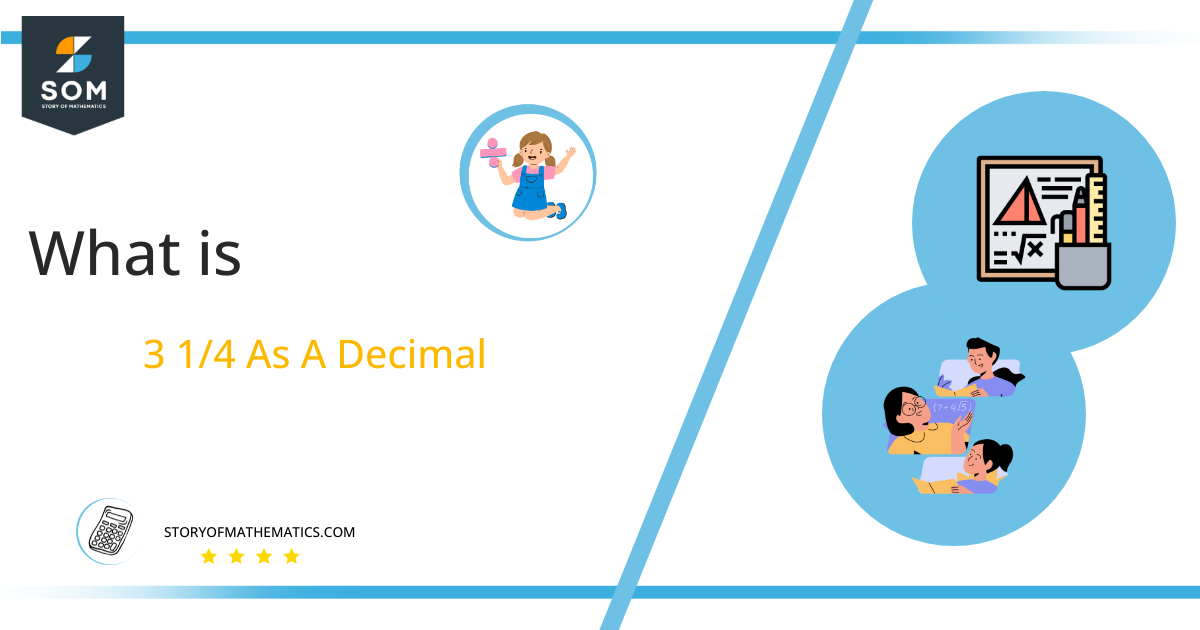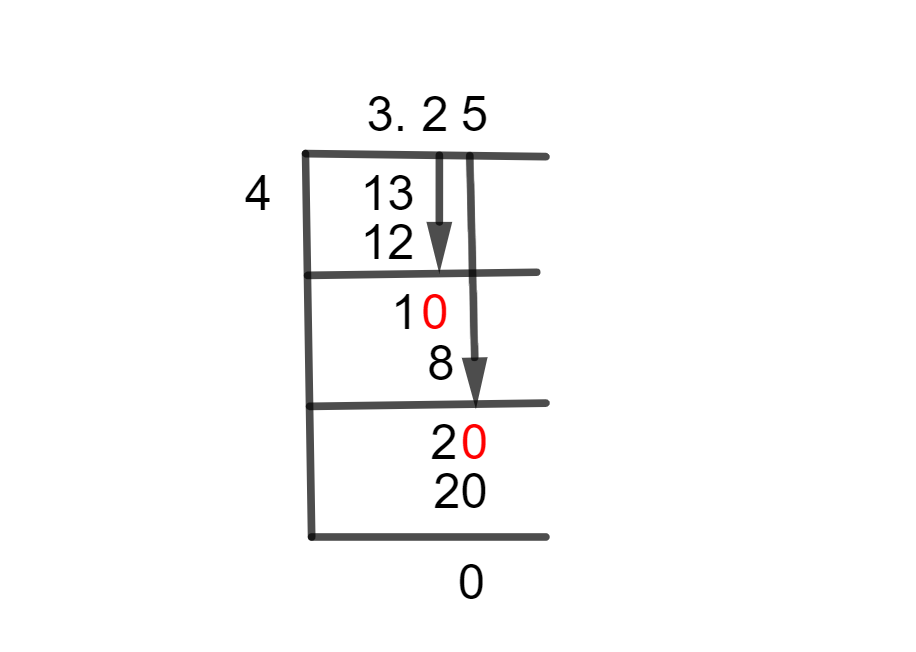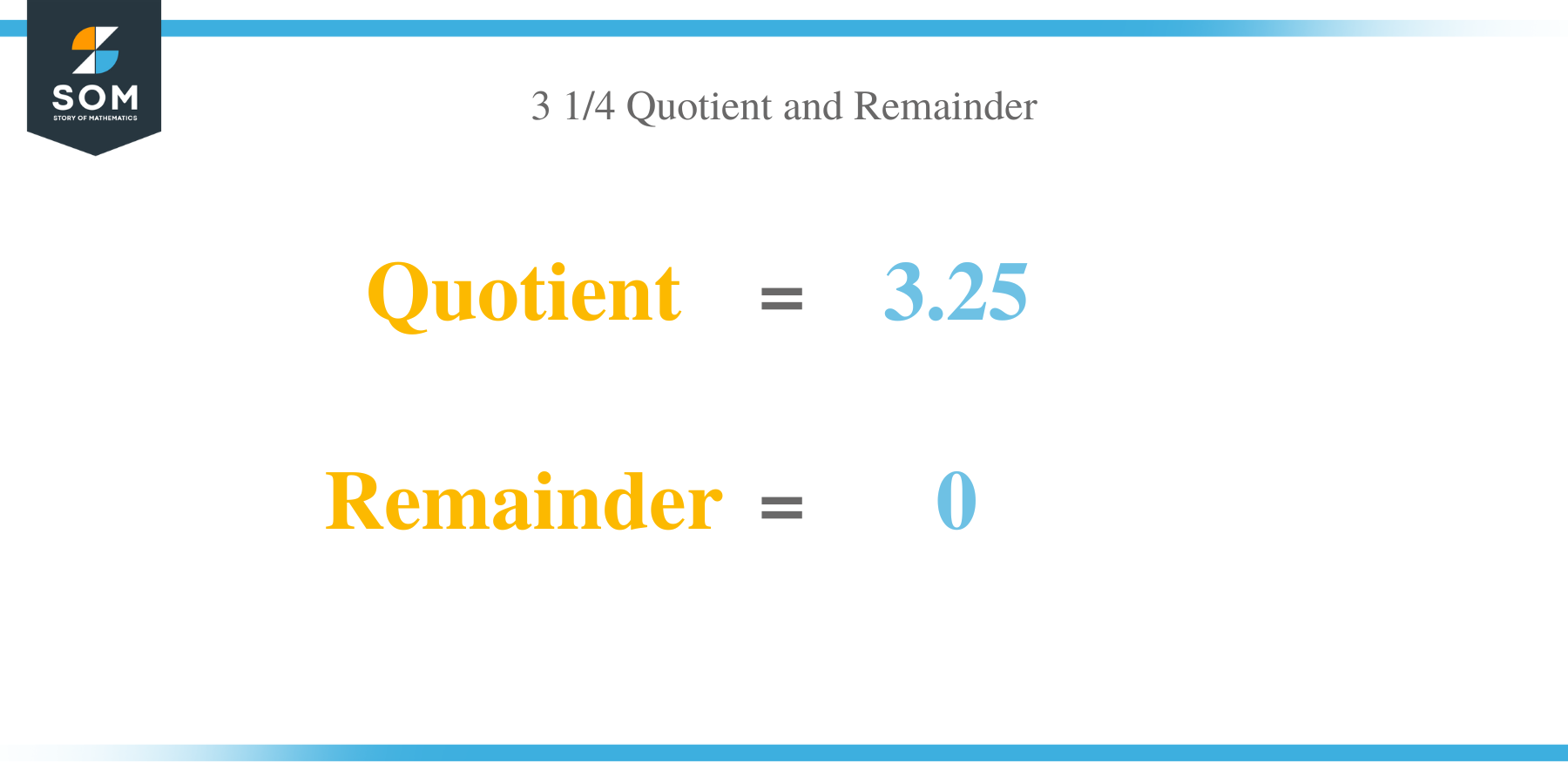What Is 3 1/4 as a Decimal + Solution With Free Steps

The fraction 3 1/4 as a decimal is equal to 3.25.
A Fraction is actually a portion of a whole. Fractions have a denominator and a numerator. The denominator denotes the number of parts into which the whole has been divided. The numerator represents the number of parts you have.
A Mixed Fraction is a sort of fraction that is formed by combining a proper fraction and a whole number.
Let’s convert the fraction 3 1/4 to its decimal equivalent.
Solution
The conversion of a mixed fraction into an improper fraction is the first step in solving it. We will convert a mixed fraction to an improper fraction by calculating the product of the denominator and the whole integer and then adding it to the mixed fraction’s numerator. The obtained value is the improper fraction’s numerator.
In this example, the product of 4 and 3 is 12, which when added to 1 provides 13, which is the numerator of the desired fraction and its denominator is 4.
3+1/4 = 13/4
A fraction can be turned into a division since the numerator is the Dividend and the denominator is the Divisor in a division:
Dividend = 13
Divisor = 4
The quotient is the answer obtained when we divide one number by another:
Quotient = Dividend $\div$ Divisor = 13 $\div$ 4
When we divide a number, if it is not completely divided, we are left with a Remainder.
The following is a thorough solution to 13/4 using the Long Division method.

Figure 1
3 1/4 Long Division Method
The Long Division Method is the most commonly used method for dividing numbers that do not have a fixed integer value. Because the dividend is not the divisor’s Multiple, the process is carried out by determining the divisor’s Closest Multiple to the dividend.
In this case, we have Fraction 3 1/4 to solve, which is equal to:
13 $\div$ 4
The mathematical procedures for dividing 13 by 4 are shown below:
13 $\div$ 4 $\approx$ 3
Where:
4 x 3 = 12
To get our remaining value, we subtract 12 from 13:
13 – 12 =1
As a result, the remainder is 1, which is smaller than the divisor, Therefore we proceed by the addition of a decimal point in the quotient. To accomplish this, we place a zero to the right of the remainder. As a result, we obtain 10 divided by 4:
10 $\div$ 4 $\approx$ 2
Where:
4 x 2 = 8
We obtain 2 as a remainder when we subtract 8 from 10:
10 – 8 = 2
Again, the remainder 2 is smaller than the divisor, Therefore we place a zero to the right of the remainder 2. As a result, we obtain 20 divided by 4:
20 $\div$ 4 $\approx$ 5
Where:
4 x 5 = 20
Remainder:
20 – 20 = 0
As a result, we have a solution with zero remainders. The Quotient is determined to be 3.25.
Images/mathematical drawings are created with GeoGebra.
